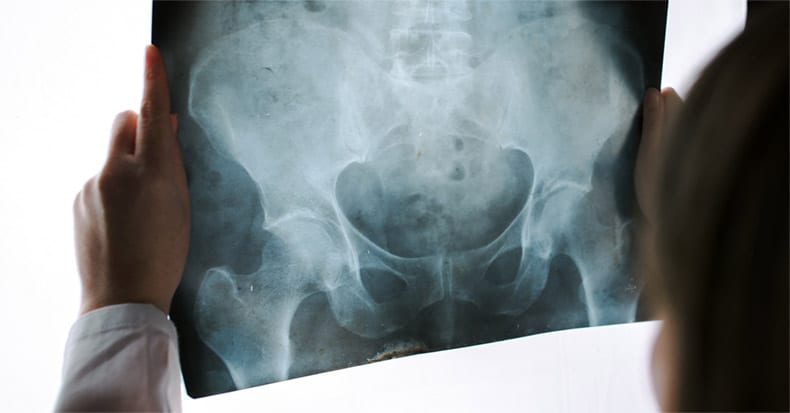Hip pain is a very common cause for lost time in sports, and it can also interfere with one’s daily activities—including work! So, what are some of the more common injuries of the hip?
MUSCLE STRAINS: This is probably the most common injury to the hip and groin because of the weight bearing “job” the hips have when running, cutting, jumping, climbing, twisting, etc. Strains occur more often with “eccentric” muscle contractions (when the muscle lengthens) vs. when the muscle shortens. Examples of eccentric muscle contractions include the lowering of a weight during a biceps curl, running DOWN a hill or steps, or lowering a bar to the chest in a bench press.
BURSITIS: A bursa is a fluid-filled sac located where muscles attach to bone to help lubricate muscles and tendons as they slide back and forth on each other during activity. We have bursae in several joints but especially in the hip, shoulder, elbow, and knee. Injury to the bursa can be the result of overuse, a trauma, or a post-surgical complication.
CONTUSIONS: A direct blow to the hip and/or pelvis can bruise the area, which is called a “contusion.” This is a common cause of bursitis and when located on the side of the hip, it is often called a “hip pointer.”
STRESS FRACTURE: These are usually seen in long distance runners and in women more often than men. Individuals with a nutritional deficiency (like those with an eating disorder) and older athletes—especially those with poor bone density—also have an elevated risk for stress fracture.
LABRAL TEAR: The labrum is a thick, fibrous ring that borders the hip socket adding depth and support to the hip joint. If the labrum tears, a patient may experience pain, stiffness, and mobility issues.
FEMOROACETABULAR IMPINGEMENT: When bone spurs form on the rim of the hip joint socket (acetabulum), they can cause pinching as the hip is moved to its end-ranges of motion. This can lead to osteoarthritis and is often due to a torn labrum and/or capsule.
OSTEITIS PUBIS: Repetitive pulling of muscles that attach to the pubic bone often seen in runners, soccer, and hockey players. Childbirth can also result in osteitis pubis.
SPORTS HERNIAS: These injuries are frequently seen in athletes from sports that require repetitive twisting/turning at high speeds (like hockey players) and are thought to be caused by an imbalance between strong thigh muscles and weaker abdominal muscles.

Leave Your Comment Below!